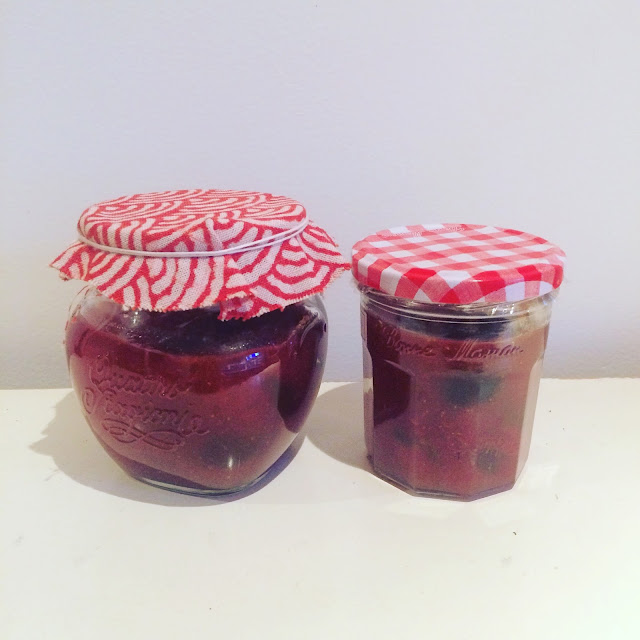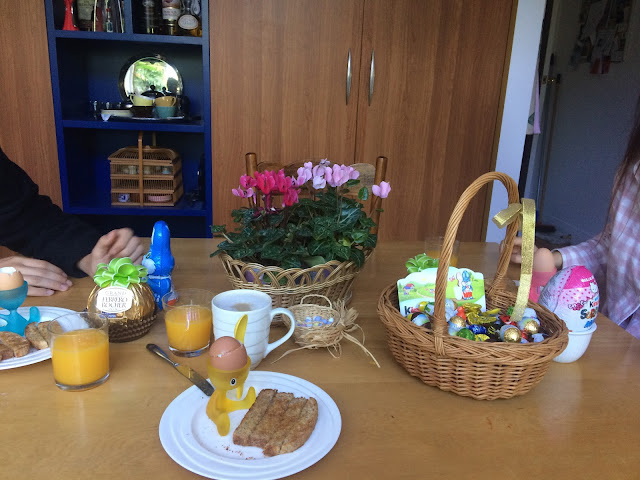This cake is traditionally made in Sestola on 6 December for St Nicholas' Day, so I am totally out of season here, but I have a good excuse: my friend Stefania gave me a jar of jam she made with rusticane plums, and the flavour was just right, not too sweet and a little sour... just like the plum jams they make at home, and an essential ingredient for this preparation. Please note, this is a VERY ITALIAN CAKE, not one that Kiwis may like as in this country the preference is for somewhat soft and 'moist' cakes (although my husband ate this happily, but with cream on the side!!!).
I am sure that every family has a lightly different recipe, this is mine and works pretty well. In a large bowl, or on a wooden table, measure 500 g of plain flour, 200 g sugar, 1 tsp of baking powder and 120 g of butter. Usually in Italy we use unsalted butter, so add a pinch of salt, but here in NZ I used salted butter, so no more salt is needed. Mix just a little then add 3 free range eggs and a small glass of liquor. I used Sambuca, Sassolino is best, but hard to find here, and Sambuca is a good substitute. You can also add the zest of a lemon or some citrus peels (I added citrus peels, about 1 heap tsp).
Mix well, don't worry if it feels too dry at first, you need to work on the dough and with a little patience you will get a soft dough.
Shape into a ball then cut into three pieces. Take the bigger piece and roll it (add more flour for the board/table).
Line a 20cm round cake tin with baking paper and place the rolled piece inside, building up the borders a little.
Now add about three or four tablespoons of plum jam.
Chop some almonds and chop some walnuts. You can also add pine nuts, or even hazelnuts, the important thing is always to have walnuts!
Top the jam with the chopped almonds,
Then with walnut pieces, and sprinkle with sultanas.
Roll some more pasty and cut a circle to cover the filling, add some leftover pastry to lift the border where necessary.
Repeat! Jam, chopped almonds and walnuts, sultana...
Roll some more pastry and cut another circle to cover the filling. Always lift the border with more pastry where necessary.
And repeat for the third time: jam, nuts, sultana and one more circle of pastry.
Use the pastry strips left over to seal well the borders with the top, I press everything down with a teaspoon for a neat look.
Make some light incisions with a fork on the top.
Sprinkle with sugar and bake at 180/200°C for about 40 minutes.
Let the pie cool down before cutting, even if the fragrance will be irresistible.
Ok, I was going to cut the cake the day after and take a great photo... but my daughter got up first and had some for breakfast.... and then it went so quickly that this is the only photo I have... anyway, you can see the three layers, and the crust is like a biscuit. It was delicious, and this is a good thing: when we make this cake in the village we have a proverb which says that if the cake is good it will be a good snowy season (mountain village you see, we need snow for skiing), and now the family hopes that this year Mt Ruapehu will have lots of snow and a great skiing season!
Photos and Recipes by Alessandra Zecchini ©









































